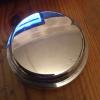You need to find the amps the new component will draw which will determine the correct gauge of wire to be used in any one application and also determine where its feed is taken from.
For example you wish to fit a pair of additional driving lamps, each lamp has a 55w bulb = 110w the pair the formula for finding the amps is
Watts divided Volts = Amps
So in our example Watts = 110w and the volts is a 12v System 110dev12= 9.16amps
Now the cars wiring loom and the headlight circuit won't like another 9.16amps put through it so you run the lights through a relay and the switching is done by the cars headlight circuit in this example.
Some common rules : the smaller the diameter of the wire the higher the resistance and thus lower current capability over a given
length. It is almost always OK to use a larger gauge wire. When in doubt about the load go up a gauge. Other factors can affect the
capacity of wire besides the length, and this includes if it is in a hot environment, duration of load, stranded vs. solid wire, wire plating.
The voltage drop value varies depending on what your application. From what it looks like in many automotive applications a 5% or more voltage drop is more common and acceptable.
As there are AWG (American Wire gauge) And SWG (Standard Wire Gauge) I have listed the conversion to mm below.
For Safety And best results
When the circuit is longer than 10 feet thats the feed into the component and the wire out to earth, add the 2 lengths together to get the total circuit lenght, always use the next larger gauge size, which is the next lower even number.
Length of the Circuit also designates the gauge of wire, the longer the circuit the more the voltage drop is on the wire
Use the following table to check the circuit length across the top range in feet and the amps of the circuit down the left side to select the best gauge wire
Attached Files
Edited by mra-minis.co.uk, 01 April 2013 - 12:15 AM.
After discussion with Dave (KernowCooper) I have deleted one chart and added the correct chart for wire size / current capacity

















